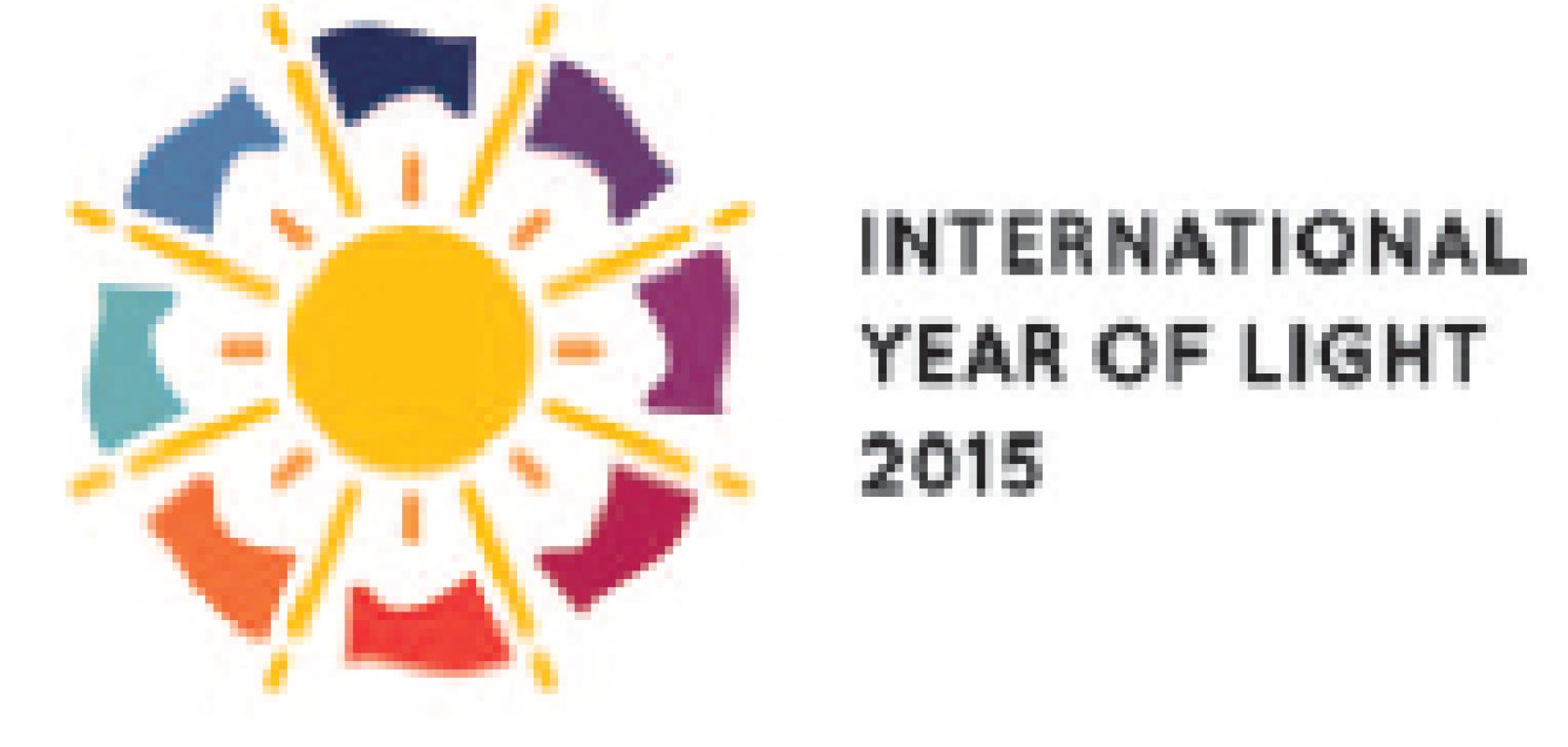The International Year of Light and Light-based Technologies 2015 (IYL 2015) is a global initiative that will highlight the importance of light and optical technologies for the development of society. It will raise awareness of how photonics promotes sustainable development and provides solutions to challenges in areas such as energy, education, communications, health and sustainability.
The IYL 2015 is a project bringing together a consortium of more than 100 partners from 85 countries, comprising scientific societies, museums, universities and other organisations, together with UNESCO. Since 2009, the partnership has been working to develop the dream of having a full-year dedicated to global actions focused on light and its applications. This was accomplished at the end of 2013, when the United Nations General Assembly proclaimed 2015 as the International Year of Light and Light-based Technologies.
The year 2015 was a natural candidate for this initiative since it commemorated a number of important milestones in the history of the science of light: 50 years since the discovery of the cosmic microwave background, 100 years since Einstein’s theory of general relativity, 150 years since Maxwell rigorously described the dynamic electro-magnetic theory of light, and 200 years since Fresnel published his first work introducing the theory of light as a wave. Moreover, the year 2015 also celebrates approximately 1,000 years since the great works on optics by the pioneering scientist Ibn Al-Haytham.
These discoveries changed physics profoundly. For instance, the wave theory of light and the laws of electrodynamics have led to developments ranging from lasers to wireless internet. Nowadays, advanced research in light science and its applications is inspiring new discoveries and opening new frontiers that are transforming our world.
From communications and health, to lighting and in everyday products such as smartphones, photonics is everywhere. But in many ways, light and photonics remain very poorly understood by society. One important goal of the IYL 2015 is to improve the public understanding of how photonics touches the daily lives of everybody and is vital to the future development of the global society.
Furthermore, businesses in the field of photonics and light-based technologies work to solve key societal challenges, such as energy efficiency, and are major economic drivers in many different areas. According to the Photonics21 A photonics private public partnership in Horizon2020 report, ‘photonics is a growing business sector, with a global market of around €350 billion, projected to reach over €600 billion by 2020.
In particular, the European photonics industry employs more than 300,000 people directly, many of these in the over 5,000 photonics SMEs.’
The IYL 2015 is also a great opportunity to promote entrepreneurship in photonics. As is often the case in high-tech areas of research, potential innovations are buried in university and research laboratories. Several universities and research institutes in the world are now working on increasing the popularity of entrepreneurship among their students and scientists. Highlighting and encouraging these initiatives to the wider international academic community will be an important part of the actions undertaken during the International Year of Light. This will also help to bridge the gap between the scientific community, entrepreneurs in SMEs and business people in large corporations. In particular, there will also be activities aimed at reaching high-level decision makers and stakeholders in areas other than science and engineering.
The IYL 2015 will enhance international cooperation by acting as a central information resource for activities coordinated by learned societies, educational establishments and industry. The IYL 2015 Steering Committee Chair John Dudley highlighted this message in his Open Letter to the Photonics Industry: ‘The International Year of Light is a great responsibility for us, as we will never again have the opportunity to promote the science of photonics on the global stage with such a strong political mandate. And the only way to really ensure its success will be to work together.’
Stakeholders in the International Year of Light will also work together to build worldwide educational capacity through activities targeting science for young people, addressing issues of gender balance, and focusing especially on developing countries and emerging economies.
Light is the perfect catalyst to promote science education among young people, which is a lever towards promoting higher education and encouraging careers in STEM fields.
During 2015, there will many actions to resolve real problems and challenges in developing countries through light-based technologies. One example of these kinds of activities is the project ‘Study after Sunset’. For more than a billion people, sunset means either complete darkness or poor-quality lighting that has dramatic impact in health and educational opportunities. An important aim of the IYL 2015 will be to promote the use of portable solar-powered high-brightness LED lanterns in regions where there is little or no reliable light.
All these themes will be promoted at international and national level. For the latter, national committees in many countries have been preparing and coordinating activities for a while. And many individuals are preparing numerous activities as well, greatly increasing the scope of actions that will take place during 2015. You can check all the planned activities on the IYL 2015 website at www.light2015.org/Home/Event-Programme.html and also the latest updates on the Facebook and Twitter (@IYL2015) channels.
The real success of all the activities undertaken during the year will be achieved if they can long outlive 2015, creating an everlasting legacy that could transform our society.


